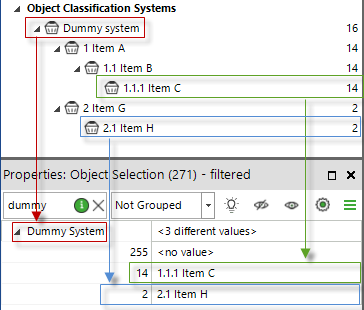Classify Models: Classification to property
Sometimes you may get IFC models that are classified based on a hierarchical classification system (like Unicode) using the IFC classification resource. But you need the classification information as a property for further processing. This article describes how to convert classifications into properties in Simplebim.
Copying classification information to a property involves there two steps
- Add a new property. If you want to skip this step for testing purposes you can also copy to an existing property, like Name or Description.
- Copy the classification information to the new property
You can download the sample model and template used in this article here
1. Add a new property
You can find detailed information on how to add a new property here.
In this example we first define a new property called ‘Dummy System’ and put it into a property set called ‘Acme Inc.’. Defining the identity source, i..e who has defined this property, is optional but a best practice to keep your properties organized inside Simplebim.

Then we add the property to the appropriate object classes. Here we use a substitution list called ‘Building Element’ for defining which object classes the property is added to.

OK, now we have added an empty property called ‘Dummy System’ to all the appropriate object classes and can proceed to populating this property.
2. Copy the classification to a property
When we copy a value from a classification system to a property the trick is to use a special notation in the From Property. There are also a lot of other powerful things you can do with the copy command and you can read all about them here.

First we use our substitution list ‘Building Elements’ again in the Object or Group. In the From Property we say that we want to copy Name of the classification item from a classification system called ‘Dummy System’. And finally in the To Property we tell that we want to copy this name into our newly added property called ‘Dummy System’. Not too complicated at all and the result looks like this:

That’s it. Now that you understand the basic ideas you can try with your own classified models!